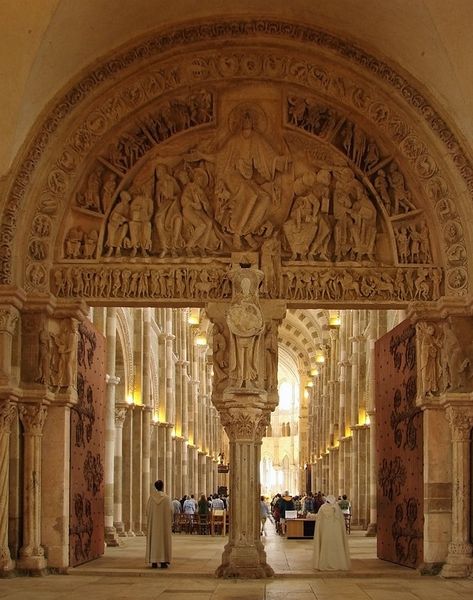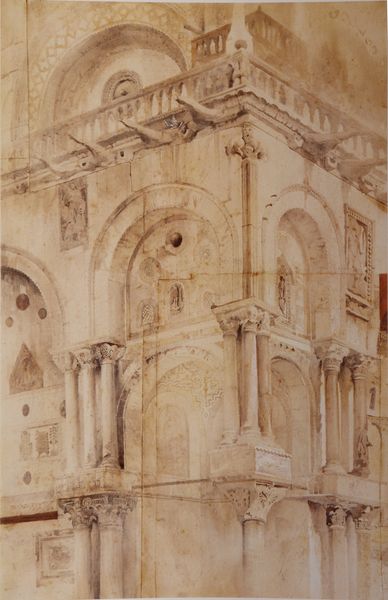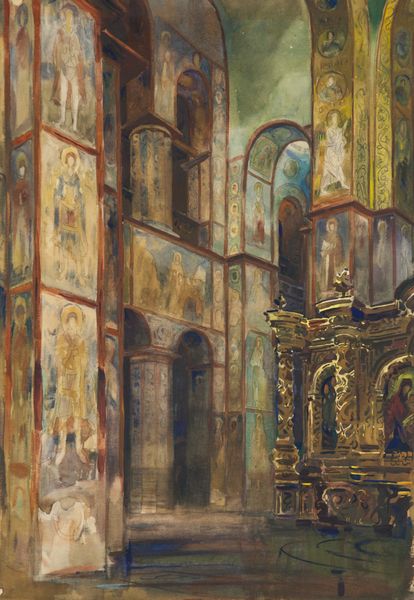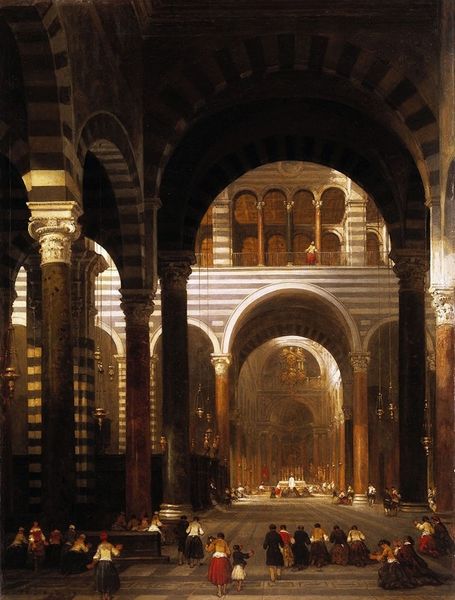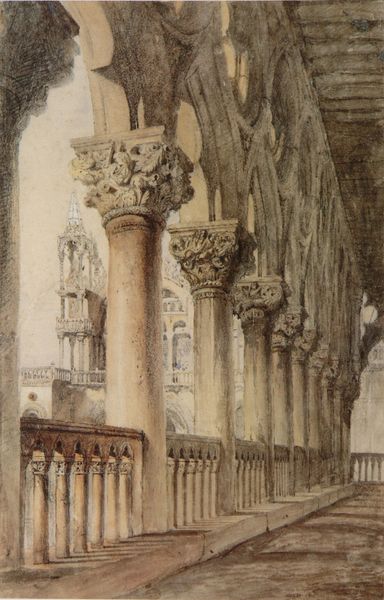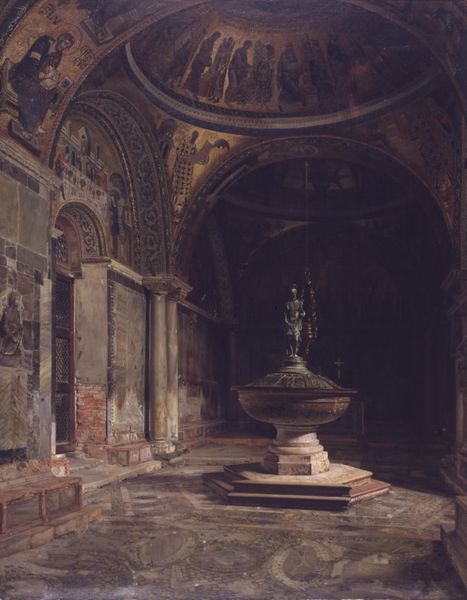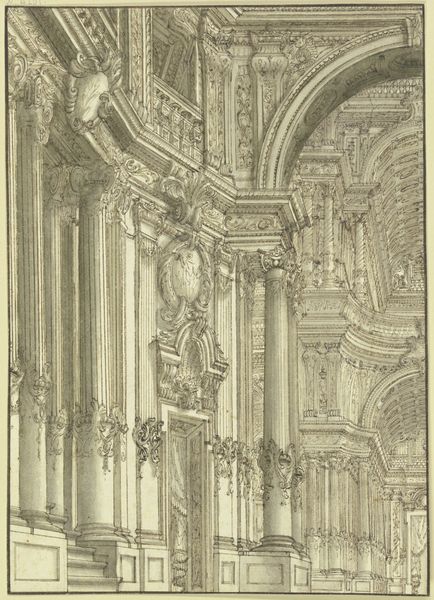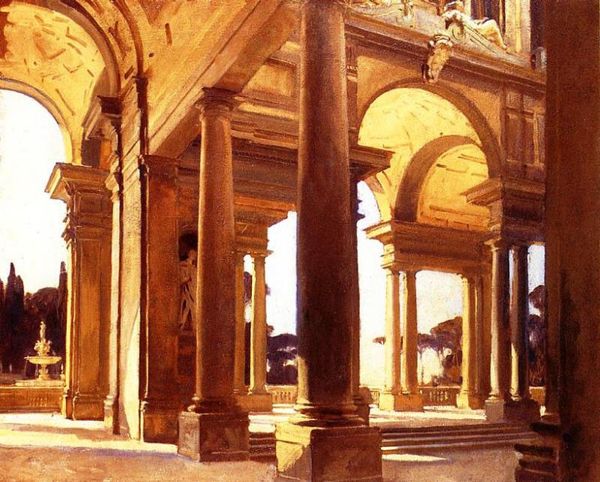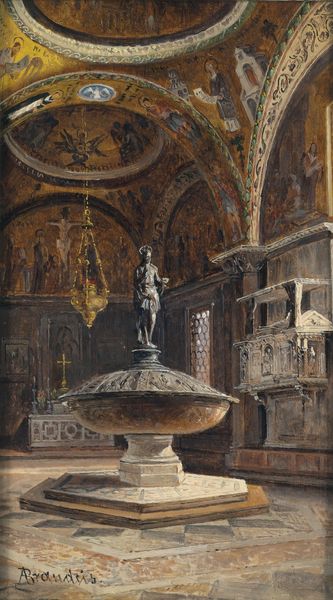
Copyright: Public domain
Editor: This is Antonietta Brandeis’s “Venice, the Entrance to St Mark’s Basilica” painted in 1926 using oil paint. It depicts the ornate entryway to the basilica. What I find striking is the contrast between the almost ethereal quality of the figures in the archway's mosaic and the grounded, more realistic figures in the foreground. How do you interpret this contrast? Curator: The archway and its mosaic freeze a sacred narrative. The figures below walk, meet, pause; they suggest time's passage. Brandeis draws from the well of collective memory: the sacred narratives above, the everyday rhythms below. See how the golden hues saturate the arch, setting it apart? Editor: Yes, there's almost a divine light emanating from it. It's also much more detailed than the lower part of the painting. Curator: Consider, too, that St. Mark's is built upon layers of history, appropriation, and adaptation. The mosaics themselves tell stories influenced by Byzantine art, carrying spiritual weight and political meaning. How does Brandeis’ painting then speak to Venice as a palimpsest of cultures? Editor: So the contrast she depicts embodies a tension between the timeless religious icons and everyday life. It reflects Venice’s complex and layered identity. I hadn't considered it that way. Curator: Exactly. Brandeis captures a moment but also gestures towards the enduring power of symbols and cultural memory imbedded in a place. It makes you wonder, what future memories will this place hold? Editor: This makes the painting even more interesting. Now I see so much more than just a pretty picture. Curator: Indeed. It's a dialogue between past and present, stillness and movement, sacred and secular. A very insightful and rewarding image to consider.
Comments
No comments
Be the first to comment and join the conversation on the ultimate creative platform.

